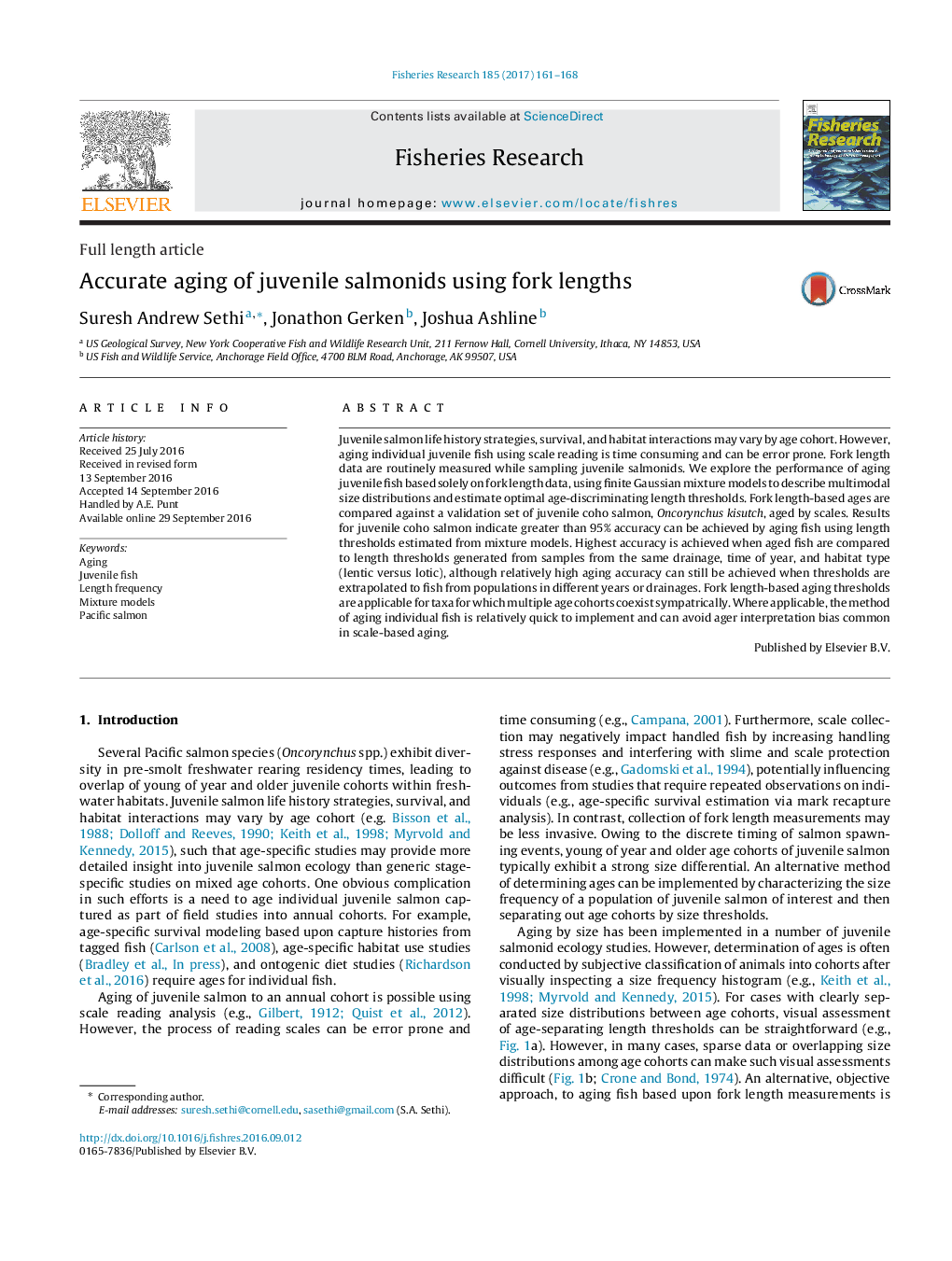| Article ID | Journal | Published Year | Pages | File Type |
|---|---|---|---|---|
| 4542651 | Fisheries Research | 2017 | 8 Pages |
•Juvenile fish length data are easy to collect and may be used to age fish.•Normal mixture models are fit to juvenile salmon fork length data to age fish.•Age-separating length thresholds that minimize classification error are estimated.•Juvenile coho salmon fork length-based ages are validated against scale-based ages.•Validation trials indicate 95%+ aging accuracy from fork length thresholds.
Juvenile salmon life history strategies, survival, and habitat interactions may vary by age cohort. However, aging individual juvenile fish using scale reading is time consuming and can be error prone. Fork length data are routinely measured while sampling juvenile salmonids. We explore the performance of aging juvenile fish based solely on fork length data, using finite Gaussian mixture models to describe multimodal size distributions and estimate optimal age-discriminating length thresholds. Fork length-based ages are compared against a validation set of juvenile coho salmon, Oncorynchus kisutch, aged by scales. Results for juvenile coho salmon indicate greater than 95% accuracy can be achieved by aging fish using length thresholds estimated from mixture models. Highest accuracy is achieved when aged fish are compared to length thresholds generated from samples from the same drainage, time of year, and habitat type (lentic versus lotic), although relatively high aging accuracy can still be achieved when thresholds are extrapolated to fish from populations in different years or drainages. Fork length-based aging thresholds are applicable for taxa for which multiple age cohorts coexist sympatrically. Where applicable, the method of aging individual fish is relatively quick to implement and can avoid ager interpretation bias common in scale-based aging.
